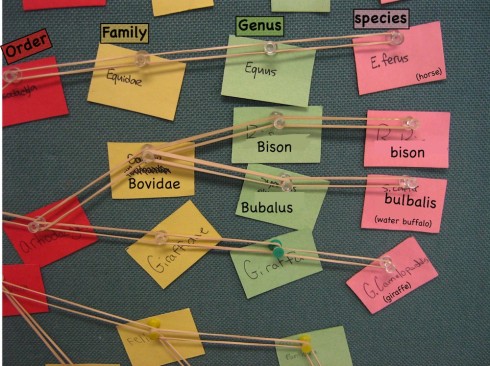
American bison (Bison bison) are native to North America, while water buffalo (Bubalus bubalis) are from Africa. They are different species, and each are classified in a different genus, however, they belong to the same Family, Bovidae. Since it’s highly unlikely that there was any genetic intermingling after Africa separated from North America, if we can figure out how long ago the two continents were together, we can estimate how long ago their common ancestor lived, and how fast evolution occurs (at least in large mammals).
Continental Rifting
North America is moving away from Africa at an average spreading rate of about 2.5 cm/year, and the continents are about 4550 km apart.
To figure out how long it has been since the continents were together, we need to convert the distance into the same units as the spreading rate and then divide by the rate.
Converting the distance to cm:
![]()
Finding the time:
![]()
So we get 182 million years.
Evolutionary Rates
Now to get really back-of-the-envelope. If it takes 182 million years to be separated by two levels of classification (the genus and species levels), then it takes approximately 91 million years for each level of classification.
If we extend this backwards up the phylogenetic tree (species –> Genus –> Family –> Order –> Class –> Phylum –> Kingdom ), which is probably illegal, we get a grand total of six levels of classification back to the divergence of the plant and animal kingdoms. That’s 546 million years, which is remarkably close to the time of the first fossil records of complex multi-cellular life, somewhere near the beginning of the Cambrian about 540 million years ago.
The major caveat, however, is that the first phylogenetic step, from Domain to Kingdom took a lot longer than our 91 million year average, since the first life appeared on Earth about 4 billion years ago.
Conclusion
There are lots of issues with this analysis, but the result is curiously coincidental. I’d really appreciate any thoughts on the validity of this particular exercise.
Note:
The spreading happens at the Mid-Atlantic Ridge, which bifurcates the Atlantic. However, if you look at a map of the bathymetry of the North Atlantic, you can see long striations — lines — that show the direction of the tectonic plate motion. The distance the continents moved are best measured along this line.